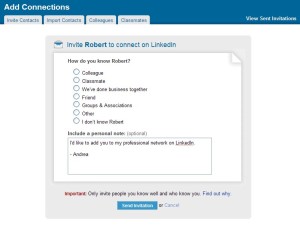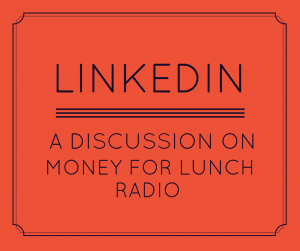The dangers of sending invitations to people you don’t know
Yesterday I told you why I think it’s a good idea to accept invitations on LinkedIn from people you don’t know. But you don’t want to be sitting around waiting for people to connect with you. You need to be proactive with your networking and start inviting people.

Basically, there are two types of people on LinkedIn: Open Networkers and what I call “Selective Connectors”.
You need to be certain which camp a person fall into before sending an invitation to connect if you don’t know the person in the real world.
What is an Open Networker?
Open Networkers usually refer to themselves that way and their philosophy is to connect with many people because you never know how you can help another person or how they can help you.
Often Open Networkers belong to a LinkedIn group of other Open Networkers called LIONS (LinkedIn Open Networkers). You will see their membership in the LION listed on their profile.
Another way to identify an Open Networker is when they list their email address in their professional headline. This is a signal that they’re open to connecting and you can use the listed email address when you send them an invitation. When you choose “other” in the list of how you know this person, enter the email address provided.
What is a “Selective Connector”?
Selective Connector’s are exactly like it sounds – they’re more selective about who they connect with. In the extreme are people who will only connect with people they have met in person and talk to on the phone or email regularly. Others are a little less rigid.
The problem with sending an unexpected invitation to a Selective Connector is that many will be annoyed or even offended by such a request. This is particularly true of long-time LinkedIn members who remember a time when LinkedIn was much more structured and rigid.
In addition to irritating them, if you inadvertently send an invitation to a Selective Connector not only will they decline your invitation they may mark it as “spam”. If you get too many of those LinkedIn will freeze your account.
Personalize Your Invitations
Whatever camp the person is in, it is always a good idea to personalize the invitation – don’t just use the default LinkedIn message. Remind the person how you met if you know the person – don’t assume they remember you.
If inviting someone you don’t know, include how you came across the person’s name, why you’d like to connect and how this connection might benefit them.
But before you send an invitation to someone you don’t know, come back tomorrow when I’ll share the best way to approach someone on LinkedIn so your invitation isn’t coming out of the blue.
Andrea J. Stenberg
Are you an Open Networker, Selective Connector or somewhere in the middle? Please leave a comment and tell us why you’ve made that decision.






